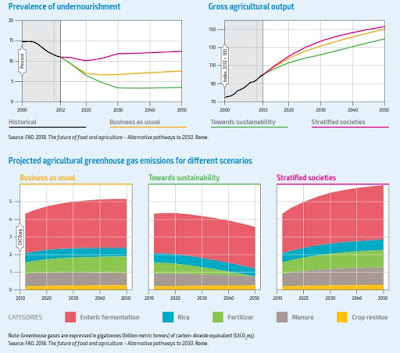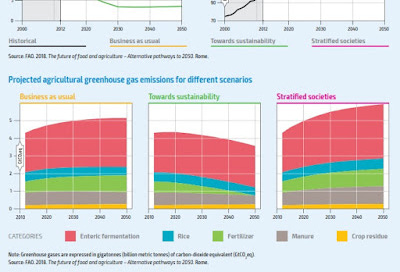Only possible to feed people sustainably in an equitable society
A recent report from the United Nation’s Food and Agriculture Organization (FAO) confirms that the current food system isn’t sustainable neither for the environment nor for our health. Organic agriculture, conservation farming and agro-ecology are key technologies for a transition to a sustainable food system, which also has to shun artificial nitrogen fertilizers. Regardless of how food is produced, an equitable society is essential for fighting hunger and malnutrition.
The report, The future of food and agriculture – Alternative pathways to 2050, analyses three future scenarios that reflect, to varying degrees, the challenges to move food and agricultural systems towards “a world in which food is nutritious and accessible for everyone and natural resources are managed in a way that maintain ecosystem functions to support current as well as future human needs”, as wished by FAO.
The first scenario is “business as usual”, whereby several outstanding challenges facing food and agriculture are left unaddressed. The second scenario, “towards sustainability”, embodies proactive changes towards more sustainable food and agricultural systems. The third scenario, “stratified societies”, outlines a future with exacerbated inequalities across countries and throughout different layers of societies. For all scenarios, the FAO revise the earlier projections made by itself and others that agriculture output need to increase with at least 70 percent to cope with a bigger population and changing consumption patterns. For the “towards sustainability” scenario agriculture output needs to increase with “just” 40 percent, and for the other scenarios around 50 percent.
The results suggest that it is still possible to move food and agricultural systems along a sustainable, equitable pathway that will meet growing demand. A global transformative process and concerted efforts that involve all the stakeholders is needed, however. As “business as usual” is not an option and further “stratified societies” certainly are not desirable, let’s focus on the “towards sustainability and how the FAO understand the meaning of it and how to get there.
In the report the FAO states that there will be a transition towards a more sustainable use of natural resources. Chemical will be restrained: for example, regulations on nitrate usage or fertilizer quantity and type are in place, which favors precision and/or organic agriculture. Food systems generating low GHG emissions are favored, and fresh food consumption is promoted. Adopting conservation agriculture, agro-ecological approaches, agroforestry, and other environmentally-friendly techniques allows yields to increase against current levels and to converge across countries, while food systems drastically reduce GHG emissions compared with current levels. Greater crop diversification and integrated pest management approaches strengthen resilience to shocks. Agricultural prices will rise worldwide, reflecting both pressure on demand and the adoption of sustainable production practices.
The flip side of that is better income for farmers and considerably less food waste. The flop side is that people depending on cash income to buy food may suffer. Therefore “Ensuring a more equitable distribution of income within and across countries is indispensable in the quest for food security, better nutrition and environmental sustainability of food systems.” The report does note, however, that increased agriculture prices will benefit many of the rural poor as they either are farmers or farm workers and that such a development will reduce the “urban premium”, i.e. change the rural-urban balance.

Contrary to the EAT Lancet Commission, the FAO doesn’t think that continued use of artificial fertilizers and drastic cuts in meat consumption are necessary for a sustainable food system. The per capita consumption of animal products and vegetables is projected to increase substantially in low and middle income countries, while consumption of animal products will have to go down around 10 percent in high income countries. Despite that agriculture production will expand considerably to cater for a bigger population and livestock herds will expand with 26 percent, the total greenhouse gas emissions are projected to go down. There is a need for a small expansion, less than six percent, of agriculture area, even though the regional distribution varies, in Sub-saharan Africa acreage need to double. The most remarkable feature of the scenario towards sustainability is that nitrogen fertilizer use has to stop.
For those in the food movement or in the agro-ecological, organic or regenerative agriculture movements the messages are hardly surprising, controversial or radical enough. But that FAO publishes a major report that even has a scenario for future agriculture where no artificial nitrogen fertilizer is used is nothing but a minor revolution. According to sources in the agency there was no launch, no press, no printed copies and a message from management to “keep a low profile”, regarding the report.



